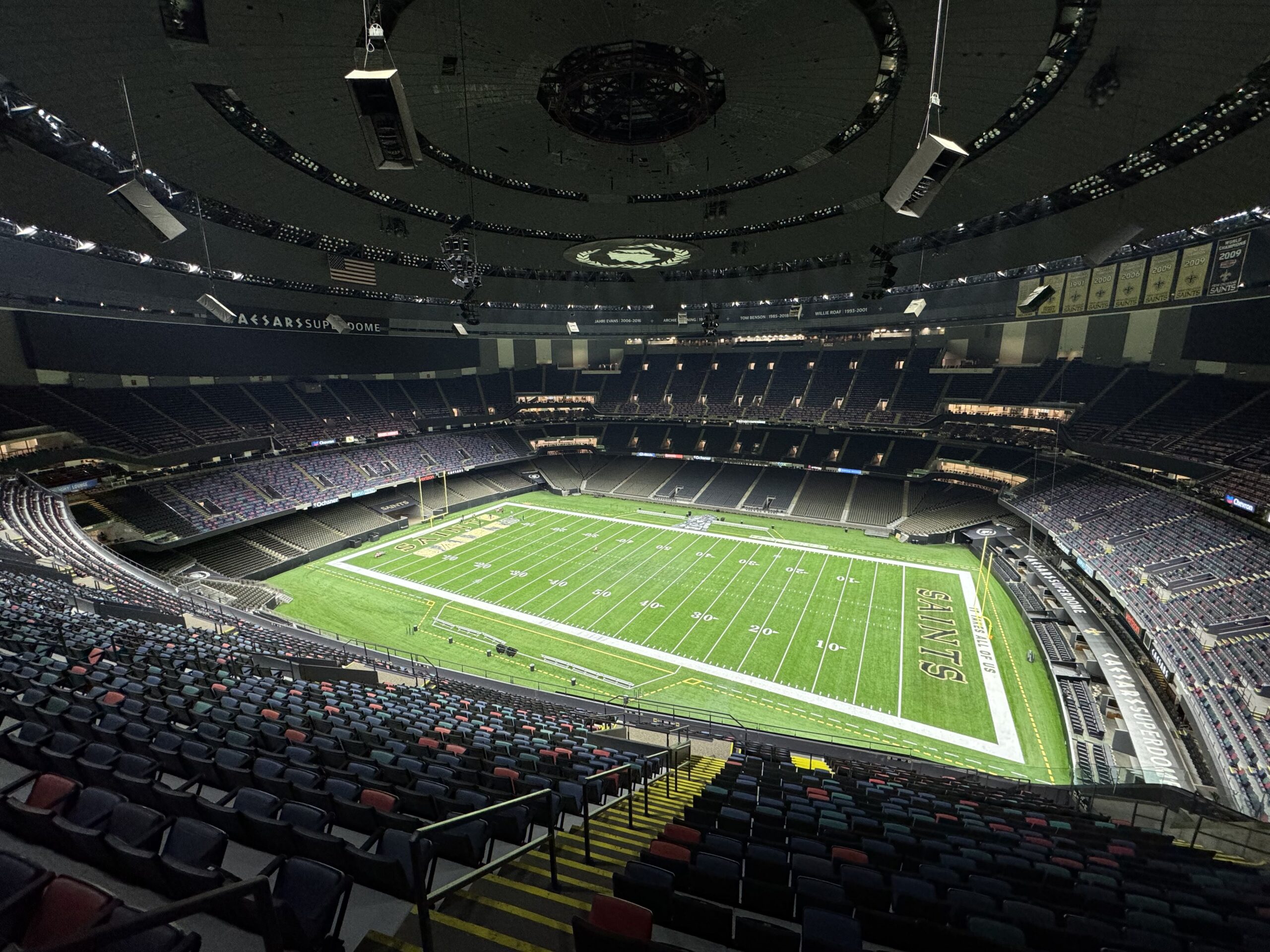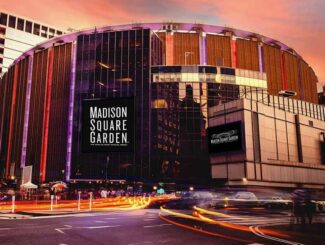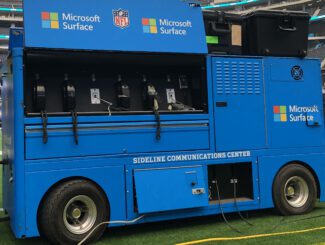
In what has to be a first for the NFL’s big game, Verizon is actively telling its customers who will be in New Orleans for this year’s Super Bowl to stay away from the stadium Wi-Fi, and use Verizon 5G cellular services instead.
“It’s absolutely a performance thing,” said Joseph Russo, Verizon executive vice president and president of global networks and technology, in a phone interview Thursday. After telling Stadium Tech Report that Verizon would not have its own SSID on the Caesars Superdome fan-facing Wi-Fi network, Russo added that Verizon would continue a program it started last year with Apple under which Apple algorithms would help Verizon customers with iPhones move to Verizon’s 5G services that will be available at the stadium.

“It’s all about keeping people on the great network we built,” said Russo, who also provided details on what may be the most extensive Super Bowl-specific buildout we’ve seen. In most years during the era of connected stadiums it’s been customary for wireless carriers to add capacity to Super Bowl host stadiums to ensure the venues are prepared for the record bandwidth demands that accompany every Roman-numeral game.
Most years, that means some expansion of the neutral DAS network, since few stadiums have enough space for carriers to do wholesale upgrades for their individual networks. Lately wireless carriers have been mostly adding their own 5G millimeter wave equipment as well, since for millimeter wave the top U.S. carriers use different spectrum which makes shared millimeter wave services impossible.
But this year, Verizon’s additional company-specific network equipment — which includes 511 ultra-wideband 5G antennas and 155 C-band specific antennas — is almost equal to the upgrades that AT&T put into the neutral-host shared distributed antenna system (DAS) inside the Superdome, a buildout that included 34 high-power MatSing Lens Antennas and 255 additional low-power radios for back of house and concourse areas. In addition to its own gear, Verizon will use the shared DAS deployment as well to help the company provide a network its customers can count on, Russo said.
Fears of Wi-Fi networks going down
What’s somewhat ironic about Verizon’s decision to publicly shun the Superdome Wi-Fi is that historically Verizon has been the wireless carrier most likely to offload its customers to a stadium’s Wi-Fi network. In several NFL and big-college stadiums, we’ve seen Verizon implement programs that would automatically switch customers from cellular to stadium Wi-Fi since historically the stadium Wi-Fi networks are usually capable of carrying more bandwidth than cellular networks.
But Russo said a glitch with the stadium Wi-Fi network at Super Bowl LVII in Glendale, Ariz., on Feb. 12 , 2023, started Verizon thinking on how it might bolster its own cellular networks to ensure fans had a good experience at future Super Bowls. While Super Bowl LVII did set a new record for stadium Wi-Fi used at a single event, the jump from the previous year’s Super Bowl Wi-Fi total was somewhat small, perhaps a result of the network glitch.
Though the Wi-Fi network at Allegiant Stadium in Las Vegas, home of Super Bowl LVIII on Feb. 11, 2024, was built to be one of the best-ever stadium deployments, Russo finally admitted what Stadium Tech Report had detected last year, that Verizon was using network tricks at that game to try to move fans to Verizon’s 5G networks, in part by having messages pop up on Apple iPhones asking users if they wanted to switch from Wi-Fi to 5G.

“After watching the Wi-Fi go down in Phoenix [an event Stadium Tech Report independently confirmed after talking to sources familiar with network operations during that game] we started working with Apple and others to find a way to prioritize 5G over Wi-Fi,” Russo said. Why Apple? Surveys from most stadiums still show that Apple iPhones are the majority of devices being used in venues, typically well over 50 percent and even more than that at big events like Super Bowls, Russo said.
According to Russo Apple and Verizon were able to build some network algorithms that would help customers “choose the network that was best,” which was Verizon’s in-house 5G network, and used those tools at last year’s Super Bowl. Even though last year’s Cisco-powered Wi-Fi network set a healthy new record for single-day Wi-Fi use, Stadium Tech Report sources with iPhones at the game that day reported getting network messages encouraging users to switch to the Verizon 5G networks.
Russo said those Wi-Fi-to-5G tools would also be used this year in New Orleans, where according to sources knowledgable with the network setup the Superdome fan-facing Wi-Fi still uses a mix of equipment from 10 years ago alongside some new upgrade equipment. Stadium Tech Report has reached out to the New Orleans Saints IT department for comment, but has not yet received a reply.
Letting fans share more experiences with 5G
“Every year the Super Bowl is a way for us to show off our latest and greatest technology,” said Russo. In addition to all the 5G millimeter wave equipment and C-band equipment put into the venue, Russo said Verizon will also be deploying two “private 5G” networks using CBRS spectrum at the Superdome for the Super Bowl. One is the coach-to-coach sideline communication network (versions of which Verizon installed at every NFL stadium ahead of the 2023 season) and the other is a 20-node CBRS system supporting a private communication channel for the Fox Network broadcast efforts.
Russo also said that Verizon has been changing its stadium 5G networks to support more data on the upload side of the connection, the amount that flows out from a customer device to the network. While previously most wireless networks have been set up to prioritize download over upload, Russo said that at the Taylor Swift Eras Tour visits to the Superdome in October, Verizon for the first time saw fan upload data on its networks surpass download data by a few percentage points.
“We’ve been shifting things a bit to get more uplink on 5G millimeter wave,” Russo said. Especially at concerts like the Taylor Swift shows, Russo said many fans just start uploading live video as the show progresses.
“We just want to make sure that at spots where we see more video happening, we have more upload capacity,” Russo said.
Stadium Tech Report has reached out to the New Orleans Saints and the NFL for comment on this story. This post will be updated if and when we get replies.







